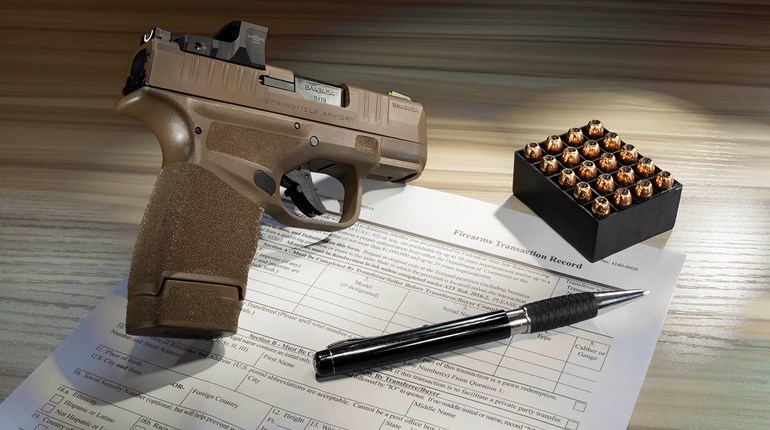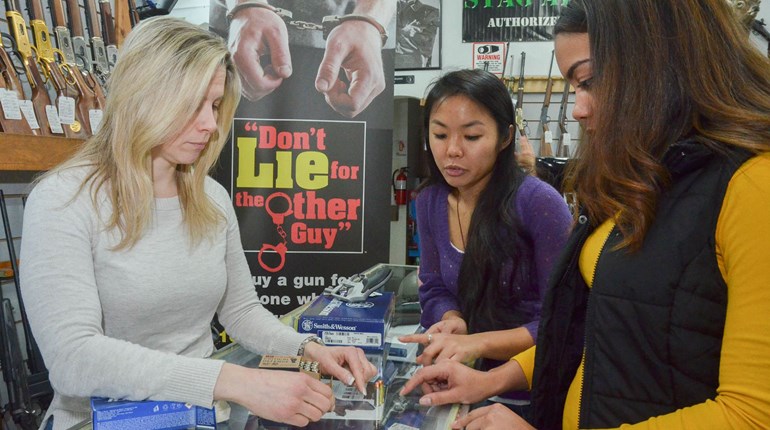
When I was 12 years old, I saw this iconic ad for a Marlin in one of the then big three hunting magazines. Those over a certain age must remember the ad. It showed a cowboy on a chestnut horse caught in the motion of stopping fast. The cowboy had the front of his hat turned up like John Wayne did in “Rio Bravo” (1959) and a red bandana around his neck. His face was turned slightly away and he had a Marlin lever-action rifle ready for action in his hands. I had to have one.
My older brother, Henry, had a Winchester Model 94—a pre-’64 model. He kept telling me it was the greatest rifle ever made. It had that musical clickity-clack sound when you worked its lever. It was beautiful. But he had to side mount a scope on it, on account of its top-ejection port. So yeah, I thought the 94 was marvelous, who wouldn’t?, but I wanted the Marlin 336 with the pistol grip and side ejection.
My family didn’t have much, so it was asking a lot. But after months of pleading—more than Ralphie from “A Christmas Story” (1983) ever did for that Red Ryder BB gun—and after doing extra chores and handing over my birthday money, I got my Model 336 chambered in .30-30. I killed my first buck with that rifle, and a bunch more in the years that followed. After a .22 rifle, the Model 336 will be the first rifle I hand my son.
Now, Marlin is 150 years old—can you believe it, a century and a half of making its classic guns?—and they’ve come out with two rifles to commemorate an anniversary few companies have ever achieved.
One is a Model 60 semi-automatic in .22 LR that looks sweet. The other, and I want this one, is a lever-action in .444 Marlin. It has a 24-inch half octagon, half round barrel, an engraved receiver with gold inlay and so much more.
As I gaze with desire at photos of this rifle, I know I’m feeling something that’s quite normal for people across America, as it’s a simple desire to own a quality firearm that has a very historical lineage. Still, I am aware this desire is often misunderstood by many in the media and by some in politics.
While guns are, by definition, inanimate objects, they are so much more. Guns go bang! They make precise and beautiful mechanical noises when we turn a bolt, open an action or work a lever. Guns aren’t just steel, wood and polymer, not hardly. They have an aura, a feel, and, metaphorically speaking, they have personalities in our hands. They hold memories and are often handed down through generations. They are tools loaded with personal and family stories. They are mechanical wonders that house exploding gunpowder which sends projectiles going down range faster than we can see.
Gun-control proponents sense all of this and they fear it, as this nostalgia, this love of American freedom held in our hands, is a powerful and freeing force. So they try to twist it into something bad. They behave as if guns actually whisper awful things to us. It’s as if they are trying to project some film noir plotline on American gun owners. Nevertheless, they know it isn’t working and this both scares and ticks them off.
The rest of us know the way we feel about guns isn’t a bad thing.
Guns to most of us are simply very functional tools designed for sport or self-defense. Guns can also be works of art, sure, and they can bring back memories when we handle them. Guns have a feel, a smell and an aura, but then, so do classic cars—the essence is actually no different, as both can be dangerous if someone doesn’t behave responsibly.
So yes, like classic car aficionados, gun owners know that the sound a lever-action rifle makes when a cartridge is sprung from its tubular magazine and loaded into its chamber is actually a complex series of mechanical innovations that were perfected in America as this nation grew into an industrial powerhouse. When we hear these clinks and clanks, this knowledge mingles with memories of hunts, or days at the range with our fathers or friends, and it is good.
We know that no Western movie is whole without the lever-action repeater; after all, it was used by every actor who ever rode a horse and wore a cowboy hat. From the late nineteenth through the early twentieth centuries, this type of rifle also starred in every sporting magazine.
We also know that, when we shoot them, guns humble us, teach us, show our strengths and weaknesses on the range and in the field, and even, in the course of a lifetime, can become parts of us. We know they are both symbols of freedom and actual tools of freedom.
Marlin sure understands this, as do so many other gun makers. This is a good thing. It is something worth protecting and teaching.

































